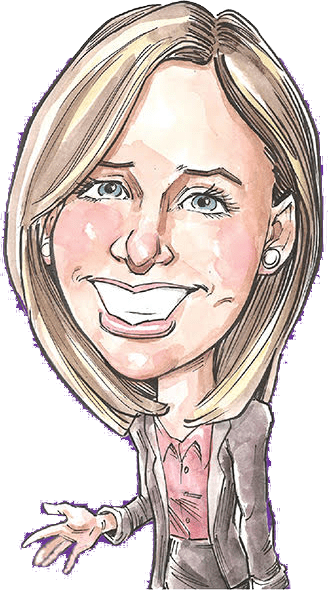
Speech-language pathologists help people regain or strengthen their ability to communicate. Many of the people that speech-language pathologists work with have impediments like stuttering, speech delays and learning disabilities. Some clients have physical impediments, such as a cleft palate, hearing loss or a brain injury.
Stephanie Hirsh, owner and speech-language pathologist of the Center for Communication and Fluency Therapy, used to stutter as a child and went to a speech-language pathologist for help. After teaching in elementary school, she decided to go back and get her master’s degree in speech-language pathology.
“I became a speech language pathologist because I wanted to help people communicate,” Hirsh says. “If someone has trouble communicating, they might miss out on important aspects of life.”
Though Hirsh works with people of all ages and different cases, she focuses on stuttering. According to Hirsh, stuttering is a complex and often times misunderstood disorder.
“Stuttering is typically something that you are born with,” Hirsh says. “Of the people that stutter, 60 percent have a specific gene.”
In order to help someone overcome their stutter, she has to help them find where the tension is in their body, she says. Half of the solution is counseling, and half of the solution is figuring out how to make speaking easier for the client, Hirsh says.
On the other hand, Karen George, the founder and speech-language pathologist of Chicago Speech Therapy, LLC, works exclusively with children in their own homes. George had previously worked in a hospital with a variety of different ages, but she developed a passion for working with children.
Even though both women work in different areas of speech language pathology, they both agree that the job is rewarding, because they are able to help people become confident and effective communicators.
For George, one of the most memorable moments of her career was working with a 2-year-old boy from Chicago. The boy had not been communicating at all, so George began by teaching him the hand symbol for “more.” His dad expressed concerns to her about whether or not his son would communicate, she says.
A few days later, the father e-mailed her with the subject line “more please.” The parents had taken their son on his first sledding trip. The parents thought that he might be cold, so they called to him to come inside.
The boy stood at the top of the hill, refusing to leave, and signed “more.”
“He was able to tell them that he wanted more and was having fun,” George says. “Being able to communicate really made a difference.”
Another aspect of the job that both Hirsh and George agree on is the impact that parental involvement can have on the improvement of communication of their children. Because the therapist is only able to see the child once or twice a week, the more the parents do to continue the speech therapy, the faster the child will improve.
George attempts to make the therapy sessions as engaging as possible by using speech-language pathology applications on the iPad. She is thereby able to, if the family has an iPad, suggest apps that the parents can download and use with their children on a regular basis.
For anyone thinking about becoming a speech-language pathologist, Hirsh suggests that a person shadow a professional in the field. There are many different areas within speech language pathology that a person could specialize in, so shadowing someone can help a person figure out if it is right for them, Hirsh says.
George suggests that people interested in the field find a mentor. In order to help people do this, she started a Facebook group, IMAGAS: Insight, Mentoring and Guidance for Aspiring SLPs, to help prospective speech language pathologists learn about the business and find a mentor. IMAGAS can be located at www.IMAGAS.org.


